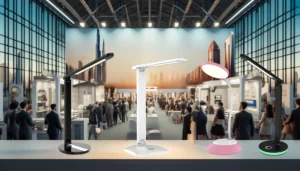
Great things in business are never done by one person. They’re done by a team of people. We have that dynamic group of peoples
Understanding your table lamp electricity usage is essential for optimizing energy efficiency and lowering power bills. Table lamps are widely used in homes, offices, and dorms, but many users overlook how much electricity they consume daily. This guide explains wattage, bulb types, energy-saving tips, and practical cost comparisons.
Watt is the international unit of electrical power, which represents the energy consumed or generated per unit of time. In the field of lighting, wattage is directly related to:
The U.S. Department of Energy points out that choosing the right wattage will not only ensure adequate lighting but can also significantly reduce energy bills. Traditional incandescent lamps only produce about 15 lumens per watt, while modern LED technology can reach more than 100 lumens per watt.
Data from the International Commission on Illumination (CIE) shows that LED lighting efficiency has increased by nearly 40% in the past decade. This means better brightness at lower table lamp electricity usage.
Wattage recommendations for different scenarios
Our NV-021 dimmable desk lamp uses intelligent dimming technology, which can flexibly adjust the brightness according to the usage scenario to maximize energy efficiency.
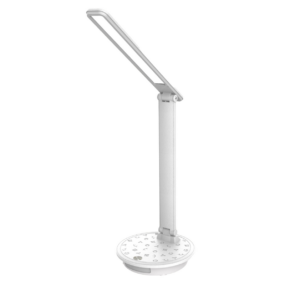
The relationship between brightness (lumens) and wattage varies by bulb type:
Lamp Type | Lumens per Watt | Equivalent to 60W Incandescent |
Incandescent | 10-17 lm/W | 60W |
CFL | 50-70 lm/W | 13-15W |
LED | 80-110 lm/W | 6-9W |
Ultra-high energy efficiency: more than 85% energy saving compared to incandescent lamps
Extremely long life: up to 25,000-50,000 hours
Environmentally friendly features: does not contain mercury and other harmful substances
Our NV-053 Smart LED Desk Lamp uses the latest LED chip technology and is US Energy Star certified, making it an ideal choice for energy-saving lighting.
Check the maximum allowable power marked on the lamp
Avoid using bulbs that exceed their rated wattage.
Pay attention to the heat dissipation space requirements
Our NV-055 compact LED desk lamp uses an innovative heat dissipation design to ensure safe operation at high power.
To calculate cost:
Cost = (Wattage × Hours Used × Electricity Rate) ÷ 1,000
Example:
Incandescent 60W × 5 hours/day × $0.12/kWh = $0.036/day
LED 10W × 5 hours/day × $0.12/kWh = $0.006/day
Switching to LED can reduce table lamp electricity usage by over 80%.
NV-018 adjustable desk lamp: multi-stage brightness adjustment
NV-005 Flexible Desk Lamp: Precise Positioning Lighting
NV-054 touch desk lamp: convenient operation experience
Q: Can a desk lamp use a 100W bulb?
A: You need to check the lamp label. Most designs have an upper limit of 60W equivalent LED. It is recommended to choose high-efficiency LED products.
Q: How to judge whether the brightness is sufficient?
A: The recommended reading lighting is 300-500 lux, which can be tested with a professional light meter.
Q: Will LED desk lamps hurt my eyes?
A: High-quality LEDs, such as our NV-063 eye protection desk lamp, use flicker-free drive and low blue light design and have passed multiple safety certifications.
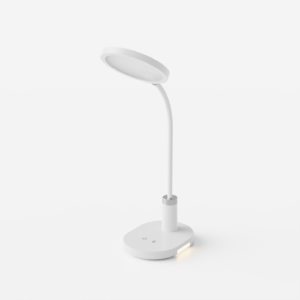
Making informed decisions about your table lamp electricity usage can lead to major energy savings and better lighting quality. Choose smart, efficient lamps, and remember:
Opt for LED
Use dimmable and smart features
Keep lamps clean and positioned well
Avoid overpowered bulbs
For expert help and free catalogs, contact our desk lamp specialists today!

Looking for the best LED desk lamp for home use? Discover expert tips on brightness, color temperature, and ergonomic lighting for a more productive and eye-friendly workspace.

Learn how to choose the best table lamp for reading. Find the perfect lighting based on style, brightness, and features like dimmable LEDs and adjustable arms.
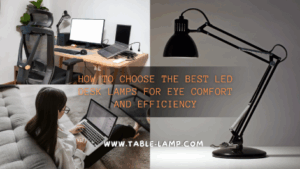
Wondering how to choose the Best LED desk lamps? This guide helps you pick the perfect lamp for reading, working, or relaxing—safe, efficient, and eye-friendly.

Discover why touch control desk lamps are the future of workspace lighting. Learn about features, benefits, and bulk purchase options for businesses.
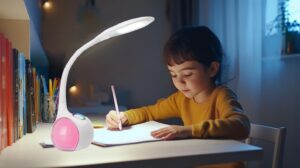
Explore the best desk lamps of 2025, including adjustable, LED, and energy-efficient options. Perfect for home offices and bulk orders from reliable suppliers.

Need the best desk lamp for small desk? Discover compact, stylish, and eye-friendly lamps that save space and boost your focus at work or study.

Learn how to rewire a table lamp safely and efficiently. Step-by-step guide for DIYers, plus bulk lamp base solutions for global buyers from China’s top factory.
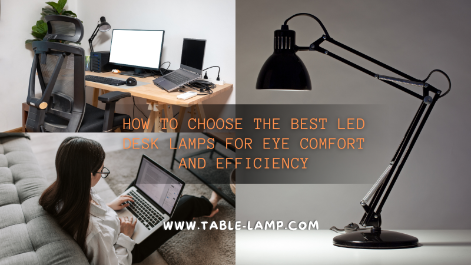
Wondering how to choose the Best LED desk lamps? This guide helps you pick the perfect lamp for reading, working, or relaxing—safe, efficient, and eye-friendly.
WhatsApp us